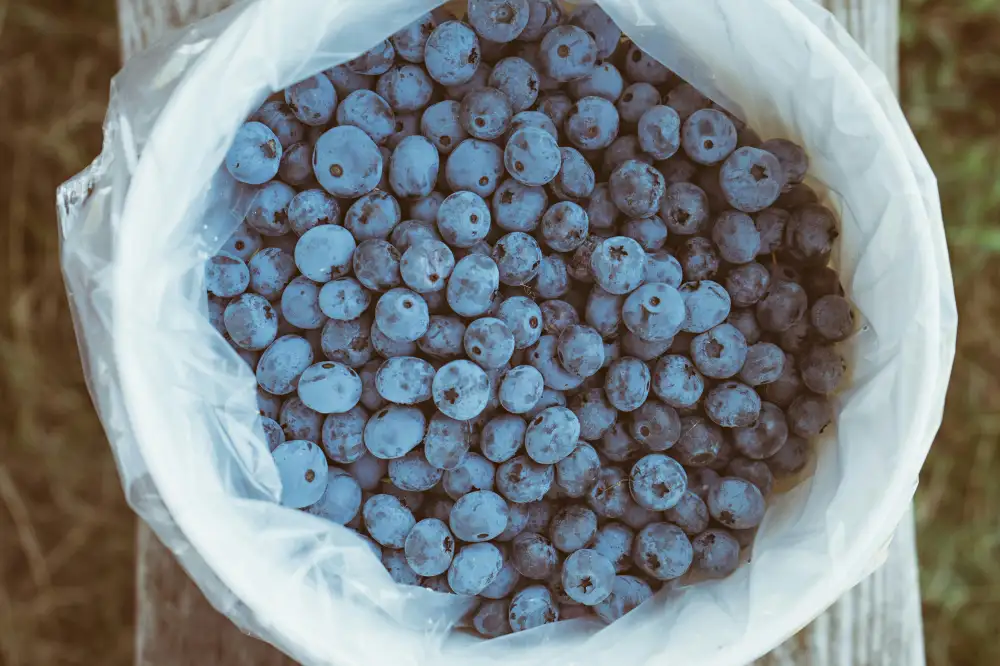Mastering the Art of Rhubarb Harvesting: Discover the Perfect Time to Harvest Rhubarb at Home

Rhubarb, with its vibrant red stalks and tart flavor, is a beloved ingredient in many culinary creations. But before you can enjoy the delectable dishes that rhubarb has to offer, it's important to master the art of harvesting this versatile plant. Rhubarb harvesting is not only about plucking the stalks at random; it requires careful observation and timing to ensure optimal taste and texture. In this article, we will explore the various aspects of rhubarb harvesting, from understanding its growth cycle to knowing the signs of readiness for harvest. So grab your gardening gloves and get ready to dive into the world of rhubarb excellence!
Understanding Rhubarb Growth Cycle
To master the art of rhubarb harvesting, it is essential to have a thorough understanding of the plant's growth cycle. Rhubarb is a perennial vegetable that goes through distinct stages of growth each year. In early spring, as temperatures start to rise, rhubarb plants awaken from their winter dormancy. They begin by sending up thick stalks with large green leaves.
During this initial growth phase, it is crucial to resist the temptation to harvest any rhubarb. The plant needs time to establish strong roots and build up energy reserves for future growth. Patience is key during this period as it can take several weeks for the plant to reach maturity.
As summer approaches, the rhubarb plant enters its rapid growth stage. The stalks continue to grow taller and thicker, while the leaves expand in size. This is an exciting time for gardeners as they witness their rhubarb plants flourishing.
However, it is still not time to harvest at this stage. It is important to allow the plant to fully develop before reaping its rewards. Premature harvesting can weaken the plant and reduce its overall productivity in subsequent years.
Towards the end of spring or early summer, the rhubarb plant reaches its peak growth phase. The stalks are now robust and vibrant in color, while the leaves are fully expanded and healthy-looking. This signals that the rhubarb is nearing readiness for harvest.
By understanding these different stages of rhubarb growth, you will be able to determine when your plants are approaching their optimal harvesting time. Patience and observation are key factors in ensuring a successful rhubarb harvest that will yield delicious results in your culinary endeavors.
Signs of Rhubarb Readiness for Harvest
Before you can enjoy the tangy and vibrant flavors of rhubarb, it's crucial to know when it's ready for harvest. Keep an eye out for these signs that indicate your rhubarb is ripe and ready to be picked.
Firstly, pay attention to the size of the stalks. Mature rhubarb stalks should be thick and sturdy, typically around 10-15 inches long. If the stalks are thin and spindly, it's best to leave them in the ground for a bit longer.
Another important sign is the color of the stalks. Look for bright red or deep pink stalks as they are a clear indication of ripeness. However, keep in mind that some varieties may have green or pale pink stalks, which can also be harvested if they meet other criteria.
Additionally, check the leaves of your rhubarb plant. Healthy and mature plants will have large, fully developed leaves. If you notice small or underdeveloped leaves, it's a sign that your rhubarb plant needs more time to grow before harvesting.
Lastly, gently tug on a few stalks to test their readiness. Ripe rhubarb stalks should easily detach from the plant with a gentle pull. If there is resistance or if the stalk doesn't come off easily, it means they are not yet fully matured.
By keeping an eye on these signs, you'll be able to determine when your rhubarb is at its peak flavor and texture for harvesting.
Best Time to Harvest Rhubarb
The best time to harvest rhubarb is during its peak season, which typically falls between April and June. It is important to wait until the plant has reached maturity before harvesting. This usually occurs in the second or third year after planting. Harvesting too early can weaken the plant and reduce future yields. Look for thick, sturdy stalks that are at least 10-12 inches long. The color of the stalks should be vibrant and uniform, with no signs of wilting or discoloration. By waiting for the right time to harvest, you will ensure that your rhubarb is at its peak flavor and texture, ready to be enjoyed in a variety of culinary creations.
Proper Techniques for Harvesting Rhubarb
When it comes to harvesting rhubarb, it is important to use the proper techniques to ensure a successful and bountiful harvest. Here are some key steps to follow:
- Start by selecting mature stalks: Look for stalks that are thick and firm, with vibrant colors. Avoid harvesting thin or limp stalks as they may not have reached their full potential.
- Use a sharp knife or garden shears: To harvest rhubarb, cut the stalks at the base near the ground level. Make sure to use a sharp knife or garden shears to prevent damaging the plant.
- Leave some stalks behind: It is essential to leave a few healthy stalks on the plant during each harvest. This allows the plant to continue growing and producing more rhubarb throughout the season.
- Remove any flower stems: If you notice any flower stems starting to form, remove them immediately. Flowering can divert energy away from producing tasty stalks, so it's crucial to prevent this from happening.
- Handle with care: While harvesting rhubarb, be gentle with the stalks as they can easily bruise or break. Hold onto the base of each stalk firmly and pull upward in a smooth motion.
By following these proper techniques for harvesting rhubarb, you can ensure that your plants remain healthy and productive year after year. Enjoy your freshly harvested rhubarb in a variety of delicious recipes!
When it comes to harvesting rhubarb, it is important to use the proper techniques to ensure a successful and bountiful harvest. Here are some key steps to follow:
- Start by selecting mature stalks: Look for stalks that are thick and firm, with vibrant colors. Avoid harvesting thin or limp stalks as they may not have reached their full potential.
- Use a sharp knife or garden shears: To harvest rhubarb, cut the stalks at the base near the ground level. Make sure to use a sharp knife or garden shears to prevent damaging the plant.
- Leave some stalks behind: It is essential to leave a few healthy stalks on the plant during each harvest. This allows the plant to continue growing and producing more rhubarb throughout the season.
- Remove any flower stems: If you notice any flower stems starting to form, remove them immediately. Flowering can divert energy away from producing tasty stalks, so it's crucial to prevent this from happening.
- Handle with care: While harvesting rhubarb, be gentle with the stalks as they can easily bruise or break. Hold onto the base of each stalk firmly and pull upward in a smooth motion.
By following these proper techniques for harvesting rhubarb, you can ensure that your plants remain healthy and productive year after year. Enjoy your freshly harvested rhubarb in a variety of delicious recipes!
Storing and Preserving Freshly Harvested Rhubarb
Canning, jams, jellies, and compotes preserve rhubarb for long-term enjoyment.
Enjoying Your Rhubarb
Freshly harvested rhubarb is best within a few days. Experiment with sweet and savory recipes, and consider preserving any excess for later use.
Published: 08. 02. 2024
Category: Home



